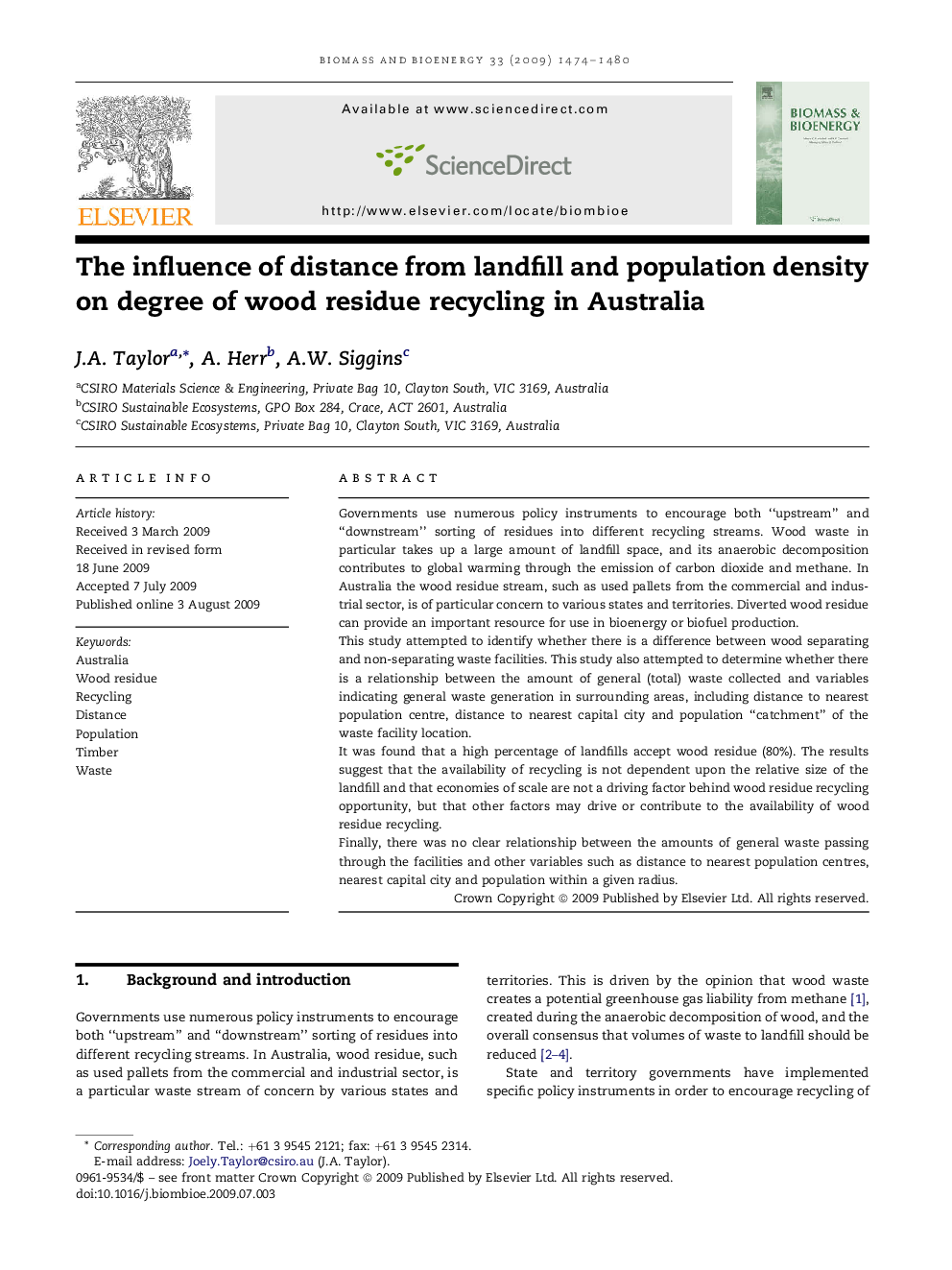| Article ID | Journal | Published Year | Pages | File Type |
|---|---|---|---|---|
| 678525 | Biomass and Bioenergy | 2009 | 7 Pages |
Governments use numerous policy instruments to encourage both “upstream” and “downstream” sorting of residues into different recycling streams. Wood waste in particular takes up a large amount of landfill space, and its anaerobic decomposition contributes to global warming through the emission of carbon dioxide and methane. In Australia the wood residue stream, such as used pallets from the commercial and industrial sector, is of particular concern to various states and territories. Diverted wood residue can provide an important resource for use in bioenergy or biofuel production.This study attempted to identify whether there is a difference between wood separating and non-separating waste facilities. This study also attempted to determine whether there is a relationship between the amount of general (total) waste collected and variables indicating general waste generation in surrounding areas, including distance to nearest population centre, distance to nearest capital city and population “catchment” of the waste facility location.It was found that a high percentage of landfills accept wood residue (80%). The results suggest that the availability of recycling is not dependent upon the relative size of the landfill and that economies of scale are not a driving factor behind wood residue recycling opportunity, but that other factors may drive or contribute to the availability of wood residue recycling.Finally, there was no clear relationship between the amounts of general waste passing through the facilities and other variables such as distance to nearest population centres, nearest capital city and population within a given radius.
